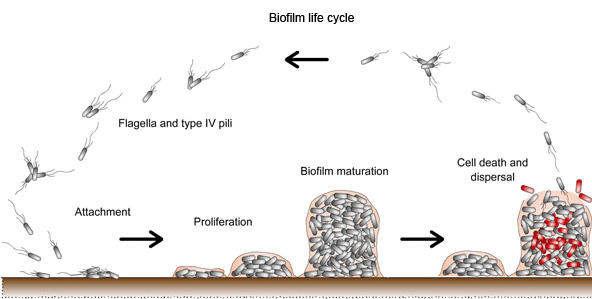2017-09-15
Researchers at the Nano Medical Science Center in Karolinska, Sweden, have found that by adding or removing electrons on the surface of PEDOT, they can stimulate bacterial metabolism and induce bacterial growth and decline. The study has been published in the international journal "Biofilms and Microbiomes" [1].
Bacteria in nature have two main ways of growth, one is growth in floating, the other is attached to the surface of a living or inanimate objects to form biofilm. In 1987, Costerton J W systematically proposed the theory of bacterial biofilm, that the biofilm is a highly organized multi-cell membrane structure formed by bacteria on the surface. Bacteria adsorbed on the surface, then it will secrete polysaccharide matrix, fibrin, lipoprotein and other polysaccharide protein complex to form biofilms and survive. Biofilm has a natural resistance to antimicrobial agents and host defense systems and is the main cause of intractable infections. If the sterilization is not complete during surgery, some bacteria may cause the patient to be infected or even life-threatening.

In this study, scientists found that medical device coating made of PEDOT can solve the sterilization problem: when PEDOT is electronically covered, it will affect the growth of Salmonella. They have made PEDOT composites doped with heparin, dodecylbenzenesulfonate or chloride and controlled to allow them to fill electrons or release electrons. When the bacteria fall on the surface of the electronically filled PEDOT, they can no longer be replicated; as the electrons are released, the bacteria accumulate electrons and convert them into energy, which allows the bacteria to form biofilm and enhance bacterial viability. After the electron is absorpted, the bacterial biofilm will be destroyed, which can accelerate the death of bacteria.
The technique can regulate the metabolism of bacteria and control its growth. Such as the material can be used in the mobile phone screen, when PEDOT is electronically covered, it will affect the growth of Salmonella; in the medical field, PEDOT material can be used to coat on medical equipment to be resistant to the invasion of bacteria; on the contrary, in the industry needs of a large number of beneficial biofilm like microbial fuel cell or waste water management, it can promote biofilm production by the release of electrons. Once the technology is mature, it will bring great benefits to human health and social development.
Reference
[1] S. Gomez-Carretero, B. Libberton, M. Rhen, et al. Redox-active conduct statistics modulate Salmonella biofilm formation by controlling afford of electron acceptors. Biofilms and Microbiomes, 2017, doi: 10.1038 / s41522-017- 0027-0.
Edited by Suzhou Yacoo Science Co., Ltd.
Copyright © Suzhou Yacoo Science Co., Ltd. All Rights Reserved
Friendly Links :
online service